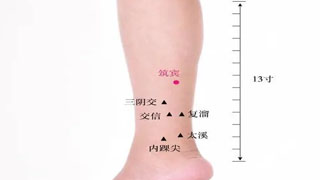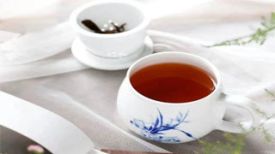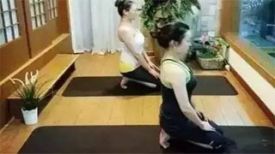
Zhubin is the name of the acupoint. The Yellow Emperor's Inner Canon: Questions on Stimulating Lower Back Pain. Zhubin acupoint is an important detoxifying acupoint in the human body. Zhubin and Tongzhu are meant to celebrate. Guests, guests as well. The name of this acupoint refers to the cold and moist water vapor formed by the mixing and recombination of Qi and blood in the Foot San Yin Meridian, which is then passed on to the Kidney Meridian. The substance of this acupoint is the cool and moist water vapor transmitted from the Sanyinjiao acupoint (the Qi and blood of the Foot Sanyin Meridian mix at Sanyinjiao acupoint without any heat or cold properties), which is similar in nature to the Qi of the lungs. After being transmitted to the Kidney Meridian, it is celebrated by the Kidney Meridian. This acupoint receives this Qi and blood as if it were a guest, hence the name.
【 Guijing Positioning 】
Gui Jing: Foot Shaoyin Kidney Meridian.
Positioning: On the line connecting Taixi and Yinggu, 5 inches above Taixi, below the gastrocnemius muscle.
【 Indications and Functions 】
Effect: Regulate the lower body heat, clear the mind, calm the stomach, reduce phlegm, lower reflux, and stop vomiting.
Indications: Epilepsy mania, vomiting, hernia, and pain in the inner leg.
Acupoint compatibility
1: Used for treating epilepsy with the use of Jiuwei and Zhongwan.
2: Paired with Bladder Shu and Sanyinjiao, it is used to treat urinary redness and pain.
3: Functional uterine bleeding: China acupuncture and moxibustion, 1998, Issue 3 reported that acupuncture at Zhubin and Sanyinjiao was used to treat functional uterine bleeding. A patient with "metrorrhagia and leakage" was diagnosed as liver qi stagnation and fire transformation, Chong Ren imbalance. Zhubin was taken with Sanyinjiao (both pairs), rapid lifting, inserting, twisting and turning manipulation, retaining needles for 30 minutes after getting qi, and intermittent acupuncture twice. Menstruation was clean three days later once a day, and continued to single acupuncture at Zhubin twice to consolidate the effect. Menstruation has been normal since then.
4: Pelvic inflammatory disease: Shaanxi Traditional Chinese Medicine (2003, Issue 5) reported that 55 cases of pelvic inflammatory disease were treated with acupuncture and moxibustion at Zhubin, uterus, Sanyinjiao and other points in combination with TDP radiation. Group 1: points at Zhubin, uterus, Sanyinjiao, Zhongji, Guilai, Qihai; Two sets of acupoints were selected from Shenyu, Mingmen, Guanyuanyu, Ciliao, and Zhongliao; Two groups of acupoints were used alternately (if accompanied by lumbar and sacral symptoms, 1 and 2 groups of acupoints were used simultaneously) once a day, with 10 times as one course of treatment. Results: 40 cases (72.72%) were cured, 11 cases (20.00%) showed significant improvement, 2 cases (3.64%) showed improvement, and 2 cases (3.64%) were ineffective, with an effective rate of 96.36%. Follow up after 3 months showed no recurrence.
5: Angina Pectoris, acupuncture and moxibustion and Moxibustion of China, 1998, Issue 3 reported that a patient with angina pectoris was diagnosed as qi stagnation and blood stasis type according to TCM syndrome differentiation. Zhubin and Neiguan were taken, and the method of lifting, inserting, twisting and reducing was used. Chest pain was alleviated after one acupuncture treatment; Two more injections were given, and the chest and back pain disappeared. The electrocardiogram was rechecked, and the ST-T changes also improved. The patient was advised to frequently self compress the Zhubin acupoint for treatment.
6: Wu Xin Fan Re, acupuncture and moxibustion of China, 1998, Issue 3 reported that a patient with Wu Xin Fan Re had yin deficiency and fire hyperactivity according to the differentiation of symptoms and signs in traditional Chinese medicine. He took Zhubin, Daling, and conventional acupuncture, which was used to soothe and soothe. He was cured by three times of acupuncture and moxibustion once a day. He was instructed to press Zhubin several times before going to bed every night to consolidate the curative effect. Since then, this disease has not been committed.
7: Oral ulcer, acupuncture and moxibustion and Moxibustion of China, 1998, Issue 3 reported that a patient with oral ulcer had pain that affected sleep and was upset. The TCM syndrome was yin deficiency and fire hyperactivity. Zhubin and Hegu were used for conventional acupuncture. Zhubin used the method of flat reinforcing and flat reducing, Hegu used the method of lifting, inserting, twisting and rotating reducing. The needle was retained for 30 minutes and once every other day. After the first acupuncture, the pain of the ulcer was significantly alleviated and the patient could sleep that night. After three times of acupuncture, the ulcer healed and the patient was instructed to press at Zhubin several times a day. There was no recurrence in the follow-up 2 years.
Acupuncture and moxibustion and Moxibustion Dacheng: Zhubin point is the main point for decadent hernia, and the fetal hernia of children is painful without milk, crazy and easy, abusive, spitting, and foot pain. Zhubin acupoint can also relieve high uric acid levels. Excessive uric acid can lead to gout and stone formation, and rubbing the acupoints can effectively alleviate the symptoms.


